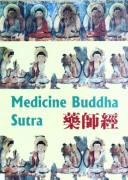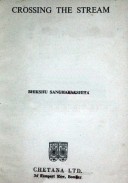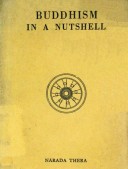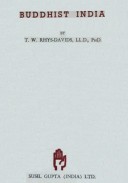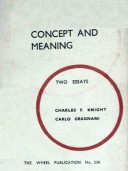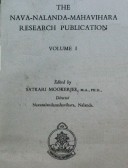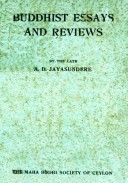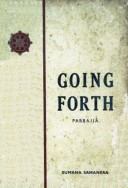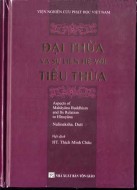Tìm Sách
Sách tiếng Anh-English >> Medicine Buddha Sutra
Thông tin tra cứu
- Tên sách : Medicine Buddha Sutra
- Tác giả : Dharma Master Hsuan Jung
- Dịch giả :
- Ngôn ngữ : Anh
- Số trang : 109
- Nhà xuất bản : International Buddhist Monastic Institute
- Năm xuất bản :
- Phân loại : Sách tiếng Anh-English
- MCB : 1210000007220
- OPAC :
- Tóm tắt :
CONTENTS
Note to the English edition…………………………i
Introduction…………………………iii
Sutra of the Medicine Buddha…………………………1
Notes…………………………93
Glossary…………………………101
ACKNOWLEDGEMENTS
We would like to acknowledge the guidance of the following spiritual benefactors, without whose input this book could not have been completed.
Heading the list, in alphabetical order, are Master Thich Huyen Dung, Master Thich Phuoc Bon and Rev. K. Watanabe, three kalyanamitrawith an Intimate understanding of the Sutra of the Medicine Buddha. Rev. Tzu Han (Antony) kindly read through and commented on the text Other benefactors have also provided crucial assistance: Upasaka Hien Mat, a scholar-practitioner of the Twelve Great Vows of the Medicine Buddha, and Incidentally, a compatriot of the senior editor from the warm-hearted land of snow he has adopted as his own; Upaslka Quynh Hoa, always there when needed – an accomplished diplomat; Upasaka Harry Leong, a great spiritual son of the Esoteric tradition; Upaslka Nancy Luong, the most cheerful data specialist we have known; and, most Importantly, Upasaka Vu Xuan Hoal, our learned Dharma consultant from Connecticut, and Upasaka Dick M. Saunders, both of whom pitched In with Incisive comments. For this second printing, we acknowledge our debt to Upasaka Duong Dinh Hy — a scholar of Zen and of ancient Chinese – who reviewed key passages in record time.
The associate editor would like to honor the memory of two outstanding teachers from Columbia University – Prof. Charles Lo and Prof. Wang Chi-chen – whose profound mastery of classical Chinese was matched only by their subtle grasp of the nuances of the English language. Whatever small contribution she was able to make to this translation Is due In large part to their skillful tutelage.
Finally, we acknowledge our debt to the late Upasika Nguyen Thi Hoang /Dieu Phung, our first Dharma teacher, and the ebullient executor of her estate, Upaslka Lien Smith, along with her husband, Prof. Forrest G. Smith, for support in the completion of this book.
INTRODUCTION
In the vast Mahayana pantheon, three Buddhas stand supreme: Sakyamuni, the Buddha of the present age; Amitabha, the Lord of Sukhavati, the Western Pure Land; and the Medicine Buddha, the “Healing Buddha”, the “Doctor of Body and Soul”. As embodiments of the archetypical “healer” watching over the living and “consoler” watching over those long gone, the Medicine Buddha and Amitabha Buddha represent teachings common to all traditions of Buddhism.
1.Bhaisajya guru – the Medicine Buddha
In East Asian temples, the Medicine Buddha is usually represented seated as part of a massive trinity with Sakyamuni (in the center) and Amitabha (on Sakyamuni’s light). His right hand is raised, forming the Varada mudra, the hand-and-flngers gesture symbolizing offering, giving, compassion. The left hand usually rests on his lap, holding a jar of medicine (or sometimes a healing fruit or stupa). The medicine jar, painted dark blue (the color of the gemstone lapis lazuli), is the distinguishing feature of this Buddha, although it may be missing from some statues.
The Medicine Buddha should be distinguished from Aksobya Buddha (whose Pure Land is also in the East) and from the Medicine King Bodhisattva(referred to in the Lotus Sutra).
2.The Sutra of the Medicine Buddha
There are currently five extant Chinese translations from the Sanskrit, done between AD 317 and AD 707, as well as two Tibetan translations. The text that forms the basis of this translation is that of the Patriarch Hsuan-tsang, founder of the Chinese Yogacara (Mind-Only) school and translator of some 75 Buddhist sutras. Completed in AD 650, it is considered the most complete and authoritative version of the sutra.
The sutra is composed essentially of three parts, the first describing the Twelve Great Vows of the Medicine Buddha and the second, his extensive merits as well as the various ways he comes to the aid of those beset by sufferings and calamities. The third part sets forth the vows of the twelve Yaksa Generals to benefit sentient beings.
The sutra is influential throughout East Asia, as it combines the Pure Land teachings on rebirth and the esoteric practices of reciting dharani and lighting lamps with the promise of practical benefits in everyday life. This promise (of protection against disease and other personal misfortunes) is the single most attractive feature of the sutra.
3.Teachings of the sutra
The sutra emphasizes faith in the assistance of the Medicine Buddha, while not neglecting self-powerthe cultivation of the devout.
The Buddha then said to Ananda: “If sentient beings [beset by heavy karma] should hear the name of the Medicine Buddha Lapis Lazuli Radiance Tathagata, singlemindedly recite and hold fast to it without harboring a single doubt, then it will be impossible for them to sink Into the Evil Realms.
“O, Ananda! These sublime practices of the Buddhas are difficult to believe in, difficult to understand. Yet you are now able to uphold them. You should realize that this is due to the awesome power of the Tathagatas.”
However, the question remains as to how reciting the name and making offerings to the Medicine Buddha can ward off disease and calamity, bringing peace and joy to the sick and suffering. In this context, the teachings on the transference of merit and on Mind-Only come into focus.
a) Mind-Only
All karma, good or bad, is created from the mind. If through visualizing the Medicine Buddha or reciting his name, a person’s mind changes from greed, anger and delusion to selflessness, compassion and wisdom, a change in his negative pattern of thinking Is realized and his negative karma changes for the good. “The drifting life Is cast aside for one of spiritual dedication” Qohn Blofeld). with the removal of greed, anger and delusion, most other Illnesses, however physical their symptoms, are also eventually cured.
b) Transference of merit
Some of us may ask whether the effect of evil karma can be… changed by repeating the name of Kuan-Yin (Avalokitesvara). This question is tied up with that of rebirth in Sukhavati (the Pure land) and it may be answered by saying that the invocation of Kuan-Yin’s name forms another cause which will right away offset the previous karma. We know, for example, that if there is a dark, heavy cloud above, the chances are that It will rain. But we also know that if a strong wind should blow, the cloud will be carried away somewhere else and we will not feel the rain. Similarly, the addition of one big factor can alter the whole course of karma … It Is only by accepting the idea of life as one whole that both Theravadins and Mahayanists can advocate the practice of transference of merit to others. With the case of Kuan-Yin then, by calling on Her name we identify ourselves with Her and as a result of this Identification, Her merits flow over to US. These merits which are now ours then counterbalance our bad karma and save US from calamity. The law of Cause and Effect still stands good. All that has happened Is that a powerful and immensely good karma has overshadowed the weaker one. (Lecture on Kuan-Yin by Tech Eng Soon – Penang Buddhist Association, c. 1960. Pamphlet)
c) Efficacy of the Vows
The key to the sutfa’s efficacy lies in the complete absence of doubt on the part of the practitioner. If he is utterly sincere; he is in a de facto state of samadhi – the very state of the Buddhas and Bodhlsattvas. His mind is then the mind of the Buddhas — their merits and virtues become his own. How then can disease or calamity defeat him?
In the end, the teaching of the Sutra of the Medicine Buddha is one of life and hope, infinite trust and boundless compassion – in other words, a teaching of the heart.
What is told is just what the wonder images in the temples tell. Somebody arrived, infinite years ago, who promised release from misery, salvation. Trust in this promise, hold fast to the name of this Buddha … If a man once heard His name, a new hope has come into his life – this hope is his treasure, he must not squander It. (W. Liebenthal)
And squander It he must not, because this hope leads to nothing less than eventual Enlightenment and Buddhahood.
 Facebook
Facebook
 Google
Google
 Google+
Google+
